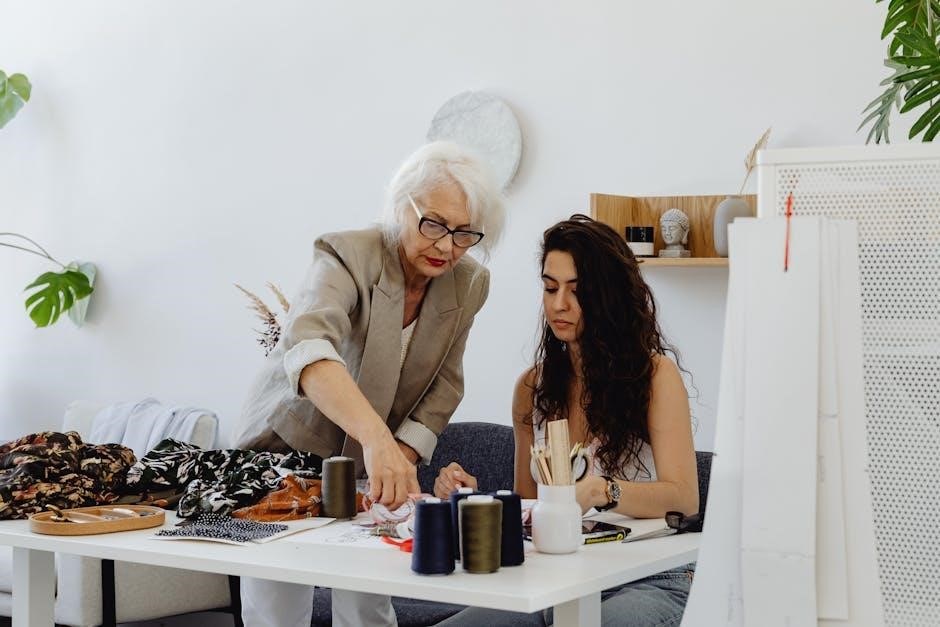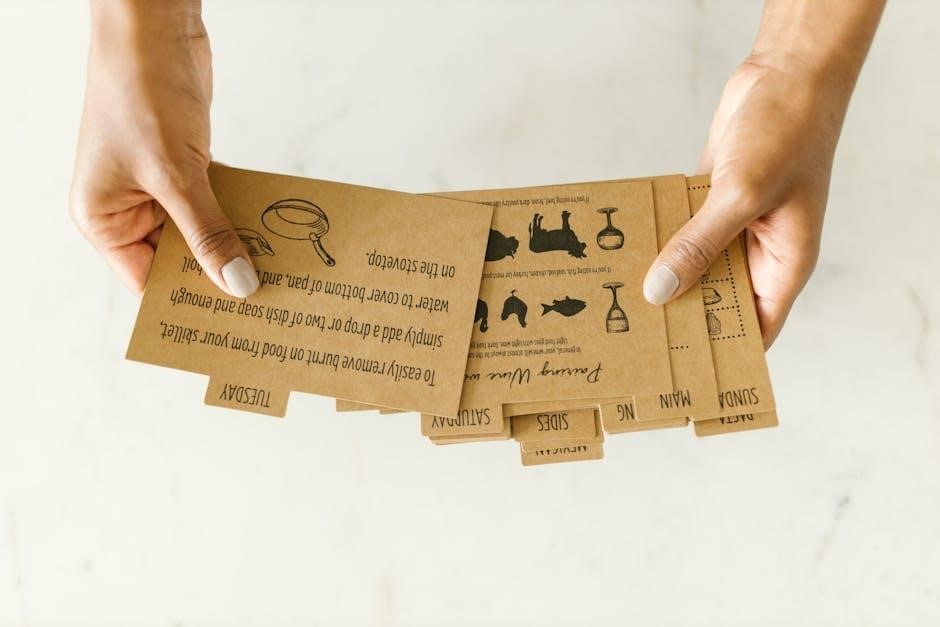Edible cake images are customizable, food-safe decorations that enhance the visual appeal of cakes for celebrations. They combine creativity with ease, making them a popular choice for bakers and decorators.
1.1 What Are Edible Cake Images?
Edible cake images are food-safe, customizable decorations printed on edible paper using food-grade ink. They are designed to be placed on cakes, cupcakes, and other baked goods. These images can be personalized with photos, designs, or text, making them ideal for celebrations like birthdays, weddings, or holidays. The process involves printing the design on wafer or icing sheets, which are then cut to size and applied to the cake. They are easy to use and add a professional touch to any dessert. The images are tasteless and odorless, blending seamlessly with the cake’s frosting or icing, creating a stunning and edible visual display.
1.2 Benefits of Using Edible Images for Cakes
Edible images offer a unique way to personalize cakes, making them visually stunning and memorable. They provide professional-looking results with minimal effort, ideal for both novice bakers and experienced decorators. Customization options are endless, allowing designs to match themes, preferences, or occasions. The images are easy to apply, saving time compared to traditional decorating methods. They also eliminate the need for advanced piping or frosting skills, making them accessible to everyone. Additionally, edible images are versatile and can be used on cupcakes, cookies, and other treats, offering a consistent and cohesive look for any celebration or event. This makes them a practical and creative solution for enhancing desserts.

Equipment Needed for Printing Edible Images
Essential tools include an edible image printer, food-grade ink, edible paper, and cutting tools like Exacto knives or sharp scissors for precise trimming and shaping.
2.1 Edible Image Printer
An edible image printer is a specialized device designed to print high-quality images onto edible paper for cakes and other baked goods. These printers are typically small, user-friendly, and compatible with food-grade inks. They utilize inkjet technology to ensure vibrant colors and precise details, making them ideal for custom designs. When selecting an edible image printer, consider its resolution, durability, and ease of use. It’s important to choose a printer specifically made for edible images to ensure safety and quality. Proper maintenance and settings are crucial for optimal performance. Always follow the manufacturer’s guidelines for the best results in your edible printing projects.
2.2 Edible Paper
Edible paper is a food-grade, wafer-thin sheet designed for printing edible images. It is made from safe, non-toxic materials and is completely consumable. The paper is typically made from starches or icing-based substances, ensuring it adheres well to cakes and other baked goods. It is heat-resistant and works seamlessly with edible printers using food-grade inks. Available in various sizes, edible paper is versatile for cakes, cupcakes, or cookies. Proper handling and storage are essential to maintain its quality. Always cut the paper to the desired size before printing or use pre-cut sheets for convenience. This ensures your edible images look vibrant and professional.
2.3 Food-Grade Inks
Food-grade inks are specifically formulated for edible printing and are safe for human consumption. These inks are made from non-toxic, food-safe materials and are FDA-compliant, ensuring they meet strict safety standards; They are designed to work seamlessly with edible printers and are available in a variety of colors. The inks are water-soluble and free from harmful chemicals, making them ideal for cake decorating. Always use reputable brands to guarantee quality and safety. Proper storage in a cool, dry place is essential to maintain ink consistency and performance. Using food-grade inks ensures vibrant, professional-looking edible images that are both safe and visually appealing.
2.4 Cutting Tools (Exacto Knife or Sharp Scissors)
Cutting tools like an Exacto knife or sharp scissors are essential for trimming edible images to the desired size. These tools ensure precise cuts, preventing the image from tearing or fraying. Exacto knives are ideal for detailed work, while sharp scissors are better for straight cuts. Always use food-safe tools to avoid contamination. A cutting mat or clean, flat surface is recommended to protect the image. Handle the tools with care to maintain sharpness and avoid accidents. Properly cleaning and storing these tools after use will extend their lifespan and ensure they remain in good condition for future projects.

Choosing the Right Cake for Edible Images
Selecting the right cake is crucial for applying edible images. Opt for cakes with flat, smooth surfaces, like buttercream or fondant. Avoid overly moist or fragile cakes, as they may not hold the image well. Ensure the cake is completely cooled and iced to prevent image peeling or distortion. The frosting should be firm but not too dry, creating a stable base for the edible image to adhere properly. Proper cake selection ensures a professional-looking finish and enhances the overall presentation of your edible design.
3.1 Types of Cakes Suitable for Edible Images
Buttercream-frosted cakes are ideal for edible images due to their smooth, even surface. Fondant-covered cakes also work well, as they provide a flat base for image adhesion. Pound cakes and sponge cakes are suitable, but avoid overly moist or fragile varieties. Red velvet and carrot cakes can be used if properly frosted. Ensure the cake is sturdy enough to hold the image without sagging. The texture and stability of the cake are key to achieving a seamless look. Avoid cakes with loose crumbs or uneven surfaces, as they may cause the edible image to peel or bubble. Proper cake selection ensures optimal image adhesion and appearance.
3.2 Preparing the Cake Surface
Preparing the cake surface is crucial for a seamless edible image application. Start by leveling the cake to ensure an even base; If using buttercream, apply a thin, smooth layer and let it set slightly in the refrigerator. For fondant-covered cakes, ensure the surface is flat and free of imperfections. Lightly dust the surface with powdered sugar or cornstarch to prevent moisture transfer. Avoid applying images to overly moist or greasy surfaces, as this can cause peeling. Ensure the cake is completely cool before frosting and applying the image. Proper preparation ensures the edible image adheres evenly and looks professional.
3.3 Frosting Requirements
The frosting plays a critical role in ensuring edible images adhere properly. Use a thin, even layer of buttercream or cream cheese frosting, avoiding thick or overly textured finishes. Fondant-covered cakes are ideal, as their smooth surface provides a seamless base for images. Ensure the frosting is set but not too dry, as this can cause the image to crack. For buttercream, chill the cake slightly to firm the frosting before applying the image. Avoid using whipped cream or highly moist frostings, as they can cause the edible image to sag or peel. Proper frosting preparation ensures a smooth, professional finish for your edible cake image.

Designing Your Edible Cake Image
Customize your edible image with vibrant colors and creative designs. Use high-resolution visuals for clarity and ensure proper sizing for your cake. Design software tools can help create stunning, personalized images for a professional finish.
4.1 Using Design Software
Design software is essential for creating custom edible cake images. Tools like Adobe Photoshop or Illustrator allow professionals to craft intricate designs, while Canva offers user-friendly options for beginners. High-resolution images are crucial for clarity, ensuring vibrant colors and sharp details. When using design software, adjust the image size to match your cake dimensions. Experiment with fonts, colors, and layouts to achieve a personalized look. Ensure the final design is saved in a high-quality format, such as PNG or JPEG, for optimal printing results. Properly calibrated software ensures accurate color representation, making your edible image stand out on the cake.
4.2 Canva Tutorial for Custom Designs
Canva is a user-friendly tool for creating custom edible cake images. Start by selecting a template or designing from scratch. Upload high-resolution images, add text, and customize colors to match your theme. Use the drag-and-drop feature to arrange elements effortlessly. Ensure the design is properly sized for your cake by adjusting dimensions in the settings. For best results, use bold colors and clear fonts to ensure visibility. Once satisfied, download the design as a high-quality PNG or JPEG file. Canva’s intuitive interface makes it easy to create professional-looking designs, even for beginners. This ensures your edible image will look stunning on your cake.
4.3 Sizing Tips for Edible Images
Proper sizing is crucial for edible images to fit perfectly on your cake. Measure the cake surface or the area where the image will be placed using a ruler or measuring tape. Use design software to adjust the image dimensions to match the cake size. A general rule is to leave a 0.5-inch margin around the image for a clean look. Ensure high-resolution images are used to maintain clarity when scaled. Avoid over-enlarging, as this can cause pixelation. Test the size by printing a small version before finalizing. Proper sizing ensures the image looks professional and complements the cake design without overwhelming it.

Printing the Edible Image
Printing edible images requires selecting the correct printer settings, loading edible paper properly, and ensuring high-quality output. Allow ink to dry before handling.
5.1 Printer Settings for Edible Images
Adjust printer settings to ensure high-quality edible images. Set resolution to 300 DPI for clarity and vibrant colors. Choose “photo” or “best quality” print mode. Disable any automatic brightness or color correction features. Select “custom” or “user-defined” paper type to avoid moisture issues. Use the “matte” or “plain paper” option to prevent ink bleeding. Ensure food-grade inks are selected in the printer properties. Check the paper size matches the edible sheet dimensions. Perform a test print on regular paper to confirm alignment and color accuracy before printing on edible paper. Always refer to the printer manual for specific edible image settings.
5.2 Loading Edible Paper
Load edible paper correctly to ensure proper printing. Handle the paper by the edges to avoid fingerprints. Align the paper with the printer’s feed tray, ensuring it is straight and even. Use the manual feed option if available, as it reduces the risk of jamming. Check the printer’s guide for the correct orientation (portrait or landscape). Gently push the paper into the tray until it clicks or stops. Do not force the paper, as this can cause misalignment or damage. Ensure the paper tray is set to the correct size in the printer settings. Perform a test print on a small area first to confirm proper alignment and color accuracy.
5.3 Printing High-Quality Images
To print high-quality edible images, ensure your printer is set to the highest resolution (typically 300 DPI). Use the “photo” or “best quality” setting in your printer options. Select the correct paper type in the printer settings, choosing “edible paper” or “matte paper” for optimal results. Align the edible paper properly in the printer tray to avoid misprints. Print a test image on a small section first to check color accuracy and alignment. Allow the ink to dry completely before handling the paper. For vibrant colors, use food-grade inks designed for edible printing. Regularly clean and maintain your printer to ensure consistent output quality.

Applying the Edible Image to the Cake
Ensure the cake surface is smooth and dry. Gently place the edible image, starting from the center and smoothing outward with your hands or a tool.
6.1 Preparing the Cake Surface
Before applying the edible image, ensure the cake surface is clean, dry, and even. Allow the cake to set completely to prevent any moisture from affecting the image. Lightly dust the surface with powdered sugar or cornstarch to remove excess oil or crumbs. If using frosting, apply a thin, even layer and let it set until firm to the touch. This ensures the edible image adheres properly and maintains its vibrant appearance. Avoid placing the image on a wet or uneven surface, as this can cause air bubbles or peeling. A smooth, dry base is essential for a professional finish.
6.2 Placing the Edible Image
To place the edible image, start by gently peeling the backing from the edible paper, taking care not to stretch or tear the image. Align the image with the center of the cake and position it evenly. Once satisfied with the placement, press the image lightly onto the prepared surface, starting from the center and smoothing outward to prevent air bubbles. Use a clean, dry tool or your fingers to gently press the edges and ensure full adhesion. Avoid stretching or pulling the image, as this can cause distortion. Handle the image by the edges to prevent fingerprints or damage. Once placed, inspect and smooth any remaining air bubbles promptly for a seamless finish.
6.3 Smoothing Out Air Bubbles
After placing the edible image on the cake, inspect it for any air bubbles. To smooth them out, gently press the area with a clean, dry tool or your finger, working from the center outward. For stubborn bubbles, use a pin to carefully prick the surface and smooth the area. Avoid applying too much pressure, as this could damage the image or the cake. If bubbles persist, allow the image to set for a few minutes before retrying. Patience is key to achieving a smooth, professional finish without compromising the design or the cake’s integrity.
6.4 Timing Considerations
Timing is crucial when applying edible images to ensure optimal results. Apply the image just before serving to maintain freshness and prevent moisture transfer. Allow the cake to set at room temperature for about 10–15 minutes before refrigerating, as this helps the image adhere properly. Avoid applying images in high humidity, as this can cause peeling. If using buttercream, let it set for 10–15 minutes before applying the image. For fondant, you can apply the image immediately. Proper timing ensures a seamless finish and prevents issues like air bubbles or peeling. Plan ahead to achieve a professional-looking cake decoration.

Tips for Using Edible Images
Use high-quality edible images for vibrant visuals. Ensure designs are scaled correctly for cake size. Keep images dry to prevent peeling. Avoid direct sunlight exposure.
7.1 Design Considerations
When designing edible images, prioritize high-resolution files (300 DPI) for clarity. Use food-safe inks and ensure images are free from excessive details that may bleed. Opt for simple, bold designs to avoid smudging. Consider the cake’s color scheme to maintain visual harmony. Avoid dark backgrounds, as they may not print well on light-colored cakes. Ensure text is legible and large enough for visibility. Test designs on small scales before printing for cakes. Use design software to adjust colors and ensure compatibility with edible printers. Keep designs simple for cupcakes to avoid overwhelming the small space.
7.2 Handling Edible Images

Handling edible images requires care to prevent damage. Store them in a dry, cool place away from direct sunlight to maintain quality. Use food-safe gloves or utensils to handle them, avoiding moisture or oils from your skin. Lift images from the edges to prevent stretching or tearing. Place them on the cake immediately after printing for proper adhesion. Avoid touching the printed side to prevent smudging. Gently smooth air bubbles with a clean tool. Proper handling ensures vibrant images and prevents peeling. Never bend or fold the images, and ensure they are completely dry before handling for the best results and longevity.
7.3 Storage Tips
Proper storage is essential for maintaining the quality of edible images. Store them in a cool, dry place away from direct sunlight to prevent fading. Use an airtight container or plastic bag to protect from moisture and dust; Avoid extreme temperatures, as they can damage the edible paper or ink. Keep the images flat to prevent bending or creasing. Do not refrigerate unless necessary, as humidity can affect the paper. Use the images within a few days of printing for the best results. Proper storage ensures vibrant colors and prevents peeling or sticking. Always handle stored images gently to avoid damage before application.

Troubleshooting Common Issues
Troubleshoot common edible image problems like ink bleeding, air bubbles, or peeling. Adjust printer settings, ensure proper cake preparation, and handle images gently to avoid damage.
8.1 Ink Bleeding
Ink bleeding occurs when the ink spreads unevenly on the edible paper, causing blurry or distorted images. To fix this, ensure the printer settings are adjusted to use less ink. High humidity or using low-quality food-grade inks can exacerbate the issue. Print a test image to check ink flow and adjust settings accordingly. Using high-quality edible paper designed for inkjet printers can also prevent bleeding. Allow the printed image to dry completely before handling or applying it to the cake. If bleeding persists, try lowering the print resolution or using a printer with better ink control. Proper storage of edible paper in a dry environment can also help prevent this issue.
8.2 Air Bubbles Under the Image
Air bubbles under the edible image can ruin the appearance of your cake. To fix this, gently prick the bubble with a clean pin or needle and smooth it out with your finger or a blunt tool. Ensure the cake surface is dry and even before applying the image, as moisture or uneven frosting can trap air. If bubbles persist, lightly press the image with a dry cloth to remove excess air. Preventing bubbles starts with proper application: place the image centered and smooth it outward from the center. Avoid stretching the image, as this can create wrinkles or bubbles. Applying the image immediately after printing can also help minimize air pockets.
8;3 Edible Image Peeling Off
Edible images peeling off the cake can occur due to improper application or environmental factors. Ensure the cake surface is completely dry and free of excess moisture before applying the image. If peeling happens, lightly dab a small amount of frosting or water on the edge of the image and gently press it back onto the cake. High humidity or warm temperatures can weaken the adhesion, so store the cake in a cool, dry place. Avoid touching the image excessively, as oils from your skin can cause it to lift. For best results, apply the image just before serving to maintain adhesion and freshness.

Bonus Tips and Tricks
Enhance your edible image creations with these bonus tips:
- Experiment with unique shapes using cookie cutters for a personalized look.
- Coordinate edible images with the cake’s theme for a cohesive design.
- Use leftover images on cupcakes or smaller treats.
- Layer images for a creative 3D effect.
- Combine edible images with other decorations like sprinkles or edible glitter.
9.1 Using Edible Images on Cupcakes
Using edible images on cupcakes is a great way to personalize individual treats. Print smaller versions of your design and apply them to frosted cupcakes. Scale the image size to fit the cupcake surface, ensuring clarity. Apply a dab of frosting to the back of the edible image and gently press it onto the cupcake. Smooth out air bubbles with a fingertip or a small tool. For best results, apply images just before serving to prevent moisture from affecting the print. This method is ideal for themed parties or custom orders, allowing each cupcake to have a unique design. Vibrant colors and detailed designs will make your cupcakes stand out. Consider adding a protective coating like piping gel for durability.
9.2 Creating Custom Edible Toppers
Custom edible toppers are a fantastic way to elevate your cakes and cupcakes. These toppers are typically thicker than standard edible images, making them more durable. Design your topper using software like Canva or Adobe Illustrator, ensuring high-resolution quality. Print the design on edible paper or icing sheets using food-grade inks. Cut the topper into desired shapes using sharp scissors or a craft knife. Personalize with names, dates, or themed artwork for special occasions. Attach the topper to the cake using a dab of frosting or piping gel. For best results, apply the topper just before serving to maintain freshness and clarity. Custom edible toppers add a professional and personalized touch to any dessert.
9.3 Combining Edible Images with Other Decorations
Enhance your cake’s visual appeal by combining edible images with other decorative elements. Fresh flowers, sprinkles, or piped borders can complement the image, creating a cohesive design. Layer edible images over textured frosting or ganache for added dimension. For a polished look, surround the image with matching sprinkles or edible glitter. Ensure the frosting is set before adding decorations to prevent smudging. Balance the design by placing decorations sparingly around the image. This technique allows the edible image to remain the focal point while adding depth and visual interest. Experiment with different combinations to create stunning, one-of-a-kind cakes for any occasion.
